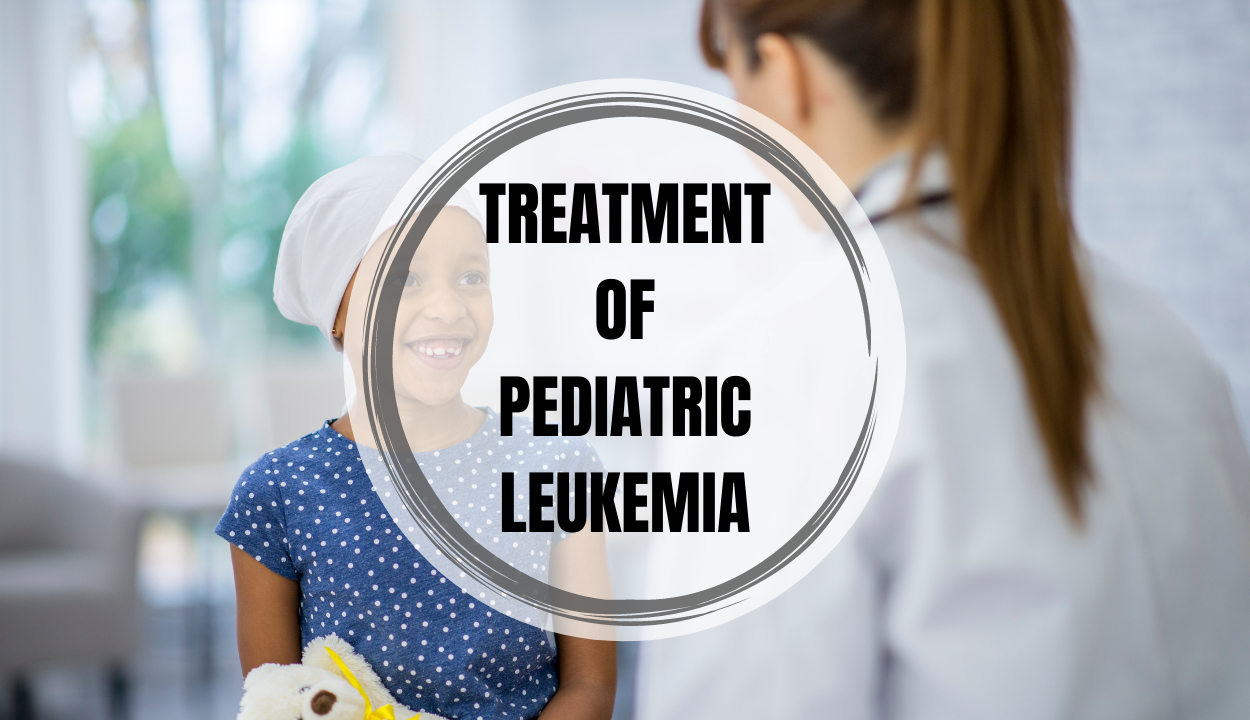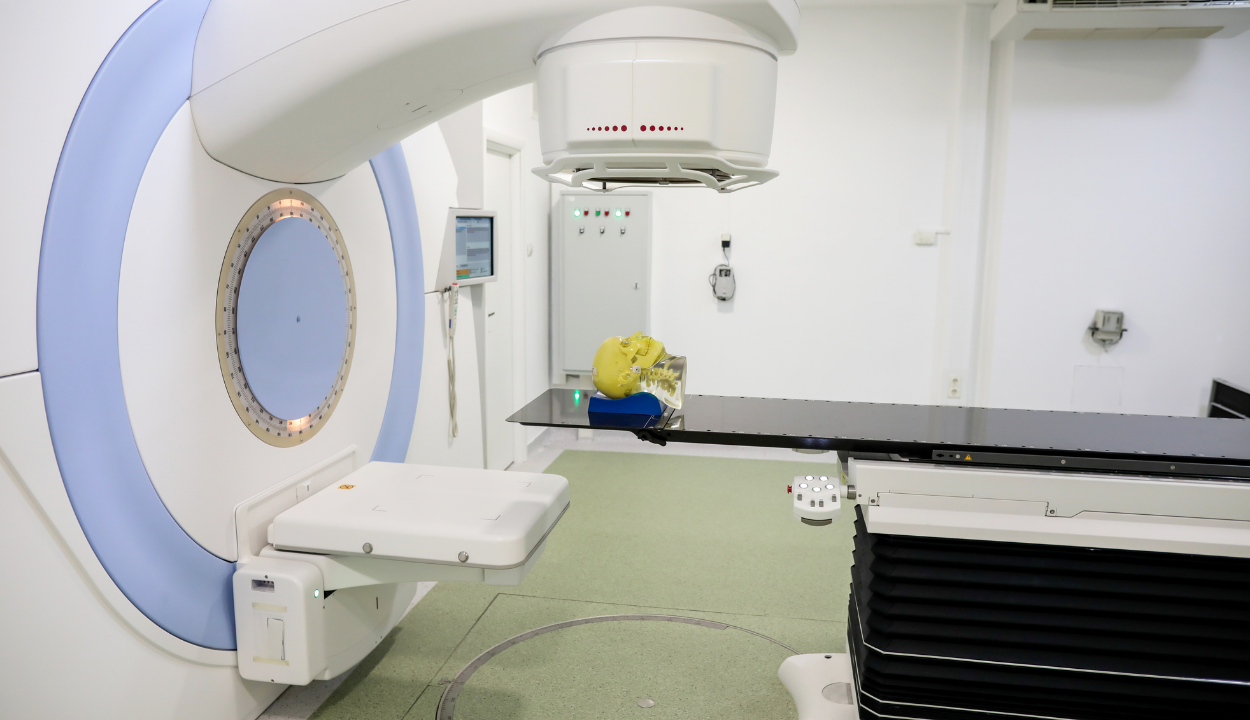Leukemia in childhood
Leukemia is the most common cancer in children and teens, accounting for almost 1 out of 3 cancers. Most childhood leukemias are acute lymphocytic leukemia (ALL) and acute myeloid leukemia (AML). Chronic leukemias are rare in children.
Pediatric acute myeloid leukemia
AML (acute myeloid leukaemia) is a blood and bone marrow malignancy that affects children. AML, also known as acute myelogenous leukaemia or acute nonlymphocytic leukaemia, is a kind of leukaemia that affects the blood cells. Acute cancers usually progress swiftly if they are not treated. Chronic cancers typically worsen over time. Myeloid stem cells in AML normally grow into myeloblasts, a type of immature white blood cell (or myeloid blasts). In AML, the aberrant myeloblasts, or leukaemia cells, do not mature into healthy white blood cells. Leukemia cells can accumulate in the blood and bone marrow, making it difficult for healthy white blood cells, red blood cells, and platelets to thrive. Infection, anaemia, and simple bleeding are all possible outcomes. Outside of the blood, leukaemia cells can travel to other regions of the body, such as the central nervous system (brain and spinal cord), skin, and gums. Leukemia cells can sometimes produce a solid tumour termed a myeloid sarcoma. Granulocytic sarcoma, or chloroma, is another name for myeloid sarcoma.Treatment of acute myeloid leukemia
Chemotherapy for most children with acute myeloid leukaemia (AML) is separated into two phases:- Induction
- Consolidation (intensification)
Induction chemotherapy in AML patients
Daunorubicin (daunomycin) and cytarabine (ara-C), both of which are administered for several days in a row, are the most commonly utilised chemo medicines to treat AML. Depending on how intense the doctors want the treatment to be, the treatment regimen may be repeated in 10 days or 2 weeks. Shorter treatment intervals may be more efficient in eradicating leukaemia cells, but they may also result in more severe adverse effects.
Consolidation
After the induction phase, the consolidation (intensification) phase begins. The goal is to use a more aggressive treatment to kill any remaining leukaemia cells. Some youngsters have a sibling who would be a suitable stem cell donor. Once the leukaemia is in remission, a stem cell transplant may be advised for these children, especially if the AML has some unfavourable prognostic markers. Most studies have shown that while this improves long-term survival over chemotherapy alone, it also increases the risk of significant consequences. Some clinicians may propose only delivering aggressive chemotherapy to youngsters with good prognostic criteria, and saving the stem cell transplant until if the AML relapses. Consolidation consists of heavy doses of the chemo medication cytarabine (ara-C) for most children who do not have a good stem cell donor. It’s also possible to use daunorubicin. It is normally given for a period of at least a few months. If the targeted medicine gemtuzumab ozogamicin (Mylotarg) was given during induction, it will almost certainly be given again during this stage of treatment. For as long as intensification continues, intrathecal chemo (into the CSF) is normally given every 1 to 2 months. Children with AML do not require maintenance chemotherapy (other than those with APL). Supportive care is a key element of AML treatment (proper nursing care, nutritional support, antibiotics, and blood transfusions). The aggressive therapy for AML frequently destroys much of the bone marrow, resulting in significant blood cell shortages, as well as other catastrophic consequences. The current high remission rates would not be conceivable without antibiotic treatment of infections or transfusion assistance.Childhood acute lymphoblastic leukemia (ALL)
Acute lymphoblastic leukaemia in children (also known as ALL or acute lymphocytic leukaemia) is a blood and bone marrow malignancy. If left untreated, this type of cancer usually worsens swiftly. Too many stem cells turn into lymphoblasts, B lymphocytes, or T lymphocytes in a child with ALL. Leukemia cells are another name for these cells. These leukaemia cells do not function like normal lymphocytes and are unable to effectively fight infection. In addition, when the number of leukaemia cells in the blood and bone marrow rises, there is less room in the blood and bone marrow for healthy white blood cells, red blood cells, and platelets. Infection, anaemia, and simple bleeding are all possible outcomes.Treatment of childhood acute lymphoblastic leukemia
Children with acute lymphoblastic leukaemia might receive a variety of treatments (ALL). Some treatments are mainstream (already in use), while others are undergoing clinical testing. A treatment clinical trial is a research study that aims to help patients with cancer improve their existing treatments or learn more about potential treatments. When clinical studies prove that a new treatment is superior to the current standard, the new treatment may be adopted as the standard.Four different types of treatment options are available
Chemotherapy is a cancer treatment that involves administering chemicals to cancer cells in order to limit their growth, either by killing them or preventing them from growing. Chemotherapy medications enter the bloodstream and can reach cancer cells all throughout the body when taken by mouth or injected into a vein or muscle (systemic chemotherapy). Chemotherapy that is administered directly into the cerebrospinal fluid (intrathecal), an organ, or a bodily cavity such as the abdomen targets cancer cells primarily in specific regions (regional chemotherapy). Combination chemotherapy is a type of cancer treatment that involves the use of multiple anticancer drugs. The method of chemotherapy administration is determined by the child’s risk group. Anticancer medications are given in higher doses to children with high-risk ALL than to those with standard-risk ALL. Childhood ALL that has spread or may spread to the brain and spinal cord is treated with intrathecal chemotherapy.
Radiation therapy in ALL
Radiation therapy is a cancer treatment that involves the use of high-energy x-rays or other forms of radiation to kill or stop cancer cells from developing. External radiation therapy involves sending radiation from a machine outside the body to the cancerous spot. Childhood ALL that has progressed to the brain, spinal cord, or testicles may be treated with external radiation therapy. It’s also possible to use it to prepare bone marrow for a stem cell transplant.Chemotherapy with stem cell transplant
Chemotherapy is a treatment that is used to kill cancer cells. Total-body irradiation is used in conjunction with chemotherapy in children aged 3 and up. The cancer treatment also kills healthy cells, including blood-forming cells. A stem cell transplant is a procedure that replaces blood-forming cells in the body. Stem cells (immature blood cells) are extracted from a donor’s blood or bone marrow, frozen, and stored. The stored stem cells are thawed and delivered to the patient via an infusion after the patient has completed chemotherapy and radiation therapy. These stem cells develop into (and replenish) blood cells in the body. For children and adolescents with ALL, stem cell transplantation is rarely used as a first-line treatment. It’s being utilized increasingly frequently as part of relapse treatment for ALL.Targeted therapy
Targeted therapy is a type of treatment that uses drugs or other substances to identify and attack specific cancer cells. Targeted therapies usually cause less harm to normal cells than chemotherapy or radiation therapy do. There are different types of targeted therapy: Tyrosine kinase inhibitor (TKIs) therapy: This treatment blocks the enzyme, tyrosine kinase, that causes stem cells to develop into more white blood cells than the body needs. Imatinib mesylate and dasatinib are TKIs used in the treatment of children with Philadelphia chromosome–positive ALL. Ruxolitinib is a TKI that is being studied in the treatment of newly diagnosed high-risk ALL. Monoclonal antibodies: Monoclonal antibodies are immune system proteins made in the laboratory to treat many diseases, including cancer. As a cancer treatment, these antibodies can attach to a specific target on cancer cells or other cells that may help cancer cells grow. The antibodies are then able to kill the cancer cells, block their growth, or keep them from spreading. Monoclonal antibodies are given by infusion. They may be used alone or to carry drugs, toxins, or radioactive material directly to cancer cells. Blinatumomab and inotuzumab are monoclonal antibodies being studied in the treatment of refractory childhood ALL. Blinatumomab is also being studied in the treatment of standard-risk ALL.CAR T-Cell therapy
The immune system is used to fight cancer in CAR T cell therapy, a new and groundbreaking way to treat Acute Lymphoblastic Leukemia (ALL). In this treatment, T cells are taken from the patient’s blood and genetically changed to produce chimeric antigen receptors (CARs). These CARs help T cells find and attack cancer cells that have certain surface markers on them. When put back into the patient’s body, these engineered T cells grow and attack cancer cells very precisely, which often results in remission. CAR T cell treatment has a lot of potential, but it can have problems like cytokine release syndrome and neurotoxicity. This shows how important it is to keep researching and improving it.You may like to read: CAR T-Cell therapy in China
Can pediatric leukemia cases be transferred to other siblings?
Some youngsters have a sibling who would be a suitable stem cell donor. Once the leukaemia is in remission, a stem cell transplant may be advised for these children, especially if the AML has some unfavorable prognostic markers. Most studies have shown that while this improves long-term survival over chemotherapy alone, it also increases the risk of significant consequences. Some clinicians may propose only delivering aggressive chemotherapy to youngsters with good prognostic criteria, and saving the stem cell transplant until if the AML relapses.You may like to read: Cost of CAR T-Cell therapy in China

